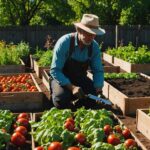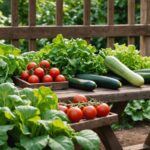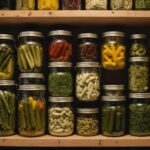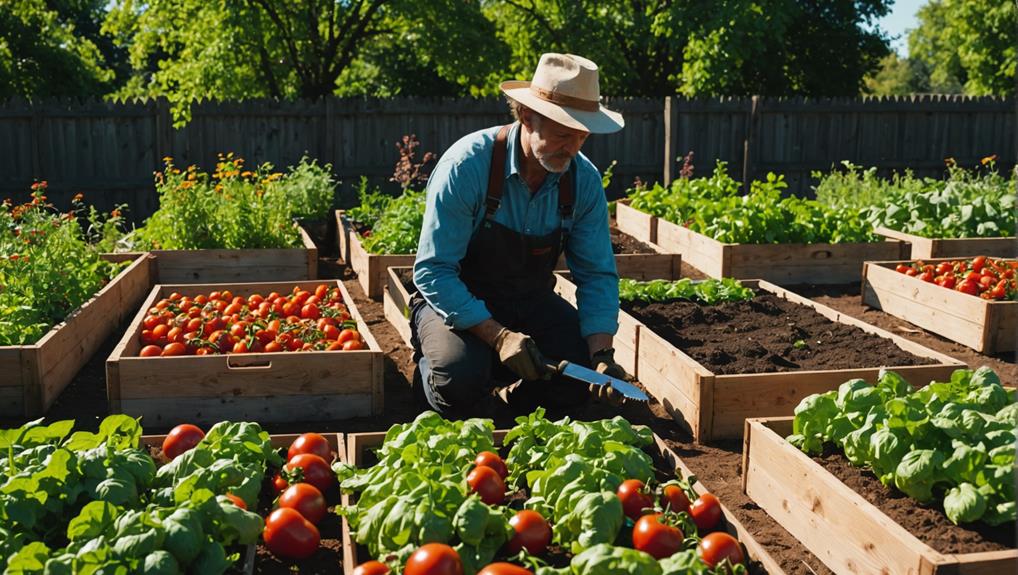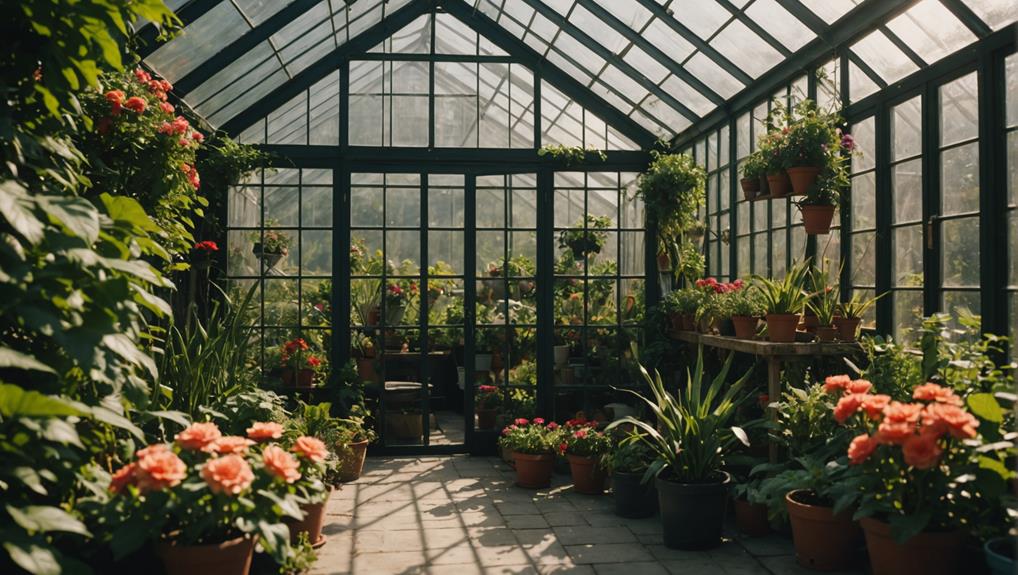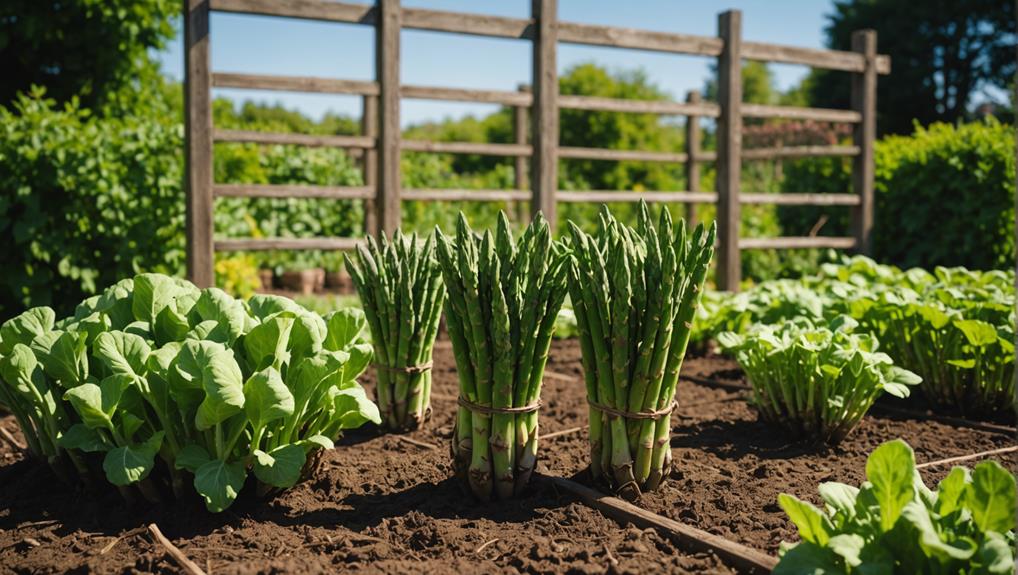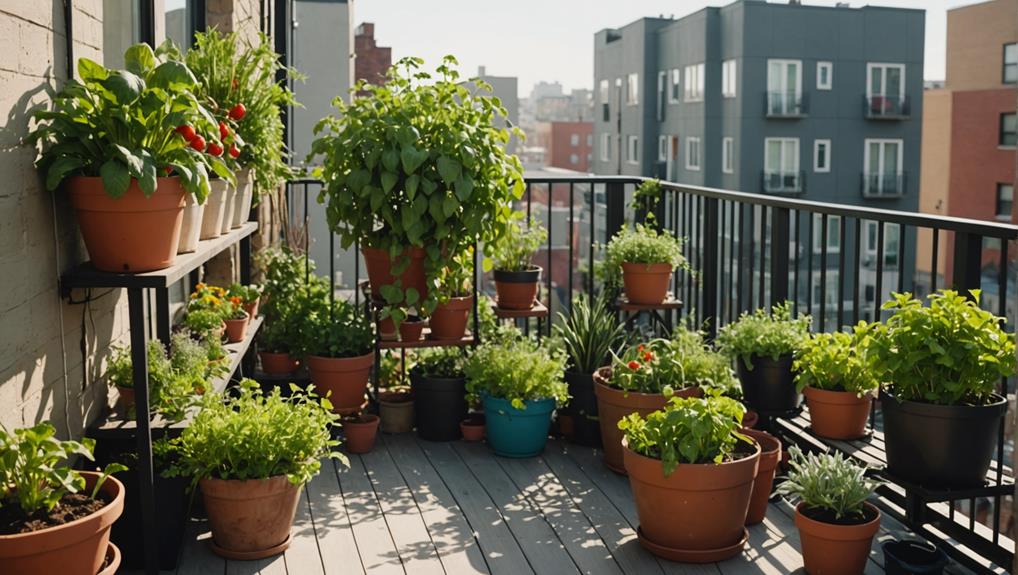As an Amazon Associate I earn from qualifying purchases.
Have you ever wondered what it would be like to live off-grid? To rely solely on your own resources and disconnect from the traditional power grid? Well, let me tell you, it’s a fascinating lifestyle that can bring you closer to nature and promote self-sufficiency. In this article, we’ll explore the essential components of off-grid living and how they can help you lead a more sustainable and independent life.
One of the most important aspects of off-grid living is generating your own power. Solar panels are a popular choice, harnessing the energy of the sun to power your home. With advancements in technology, these panels have become more efficient and affordable, making them an ideal solution for off-grid living. You’ll also want to invest in a reliable battery bank to store the excess energy for when the sun isn’t shining.
Another key component of off-grid living is water management. Without a traditional water source, you’ll need to find alternative methods of acquiring and conserving water. One option is to collect rainwater in large storage tanks. This water can then be purified and used for drinking, cooking, and other household needs. You might also consider implementing greywater systems, which recycle water from sinks and showers for irrigation purposes.
Lastly, sustainable food production is crucial for off-grid living. Growing your own food not only provides you with fresh and organic produce, but it also reduces your reliance on outside sources. Vegetable gardens, fruit trees, and even livestock can be incorporated into your off-grid homestead. By implementing permaculture and other sustainable farming practices, you can create a self-sustaining food system that nourishes both you and the environment.
In this article, we’ve only scratched the surface of the essential components of off-grid living. From generating your own power to managing water sources and growing your own food, there is so much more to learn and explore. So, if you’re intrigued by the idea of self-sufficiency and sustainability, keep reading to discover how you can embark on the off-grid lifestyle. Living off-grid refers to the lifestyle of relying on renewable energy sources and being self-sufficient in areas such as energy, water, food production, waste management, communication, healthcare, education, and skill development. It means disconnecting yourself from the grid and embracing a more sustainable and environmentally friendly way of life. In this article, we will explore the essential components of off-grid living and how they contribute to achieving self-sustainability and paving the way for a sustainable future.
What is Off-Grid Living?
Off-grid living is a lifestyle that involves living independently from public utilities such as electricity, water, and sewer systems. It is about generating and utilizing your own sources of energy, water, food, and other necessities. This lifestyle allows individuals or families to reduce their carbon footprint, decrease their dependence on fossil fuels, and reduce their impact on the environment.
Advantages of Off-Grid Living
There are numerous advantages of adopting an off-grid lifestyle. One of the major benefits is the ability to become self-sufficient and reduce dependence on external resources. By generating your own energy, producing your own food, and managing your waste, you are able to live a sustainable and environmentally responsible life.
Another advantage is the cost savings associated with off-grid living. While there are initial investments required for setting up an off-grid system, the long-term savings from not paying utility bills can be substantial. Additionally, off-grid living promotes a simpler lifestyle, focused on basic needs rather than material possessions.
Challenges of Off-Grid Living
Living off-grid also presents its fair share of challenges. One of the main challenges is the initial cost of setting up an off-grid system. The installation and maintenance of solar panels, wind turbines, or hydro power systems can be expensive. However, in the long run, these investments usually pay off due to reduced utility bills.
Another challenge is the need for regular maintenance and monitoring of the off-grid systems. Unlike relying on public utilities, where any issues can be easily resolved, off-grid systems require constant attention and troubleshooting to ensure everything is running smoothly.
Energy Sources for Off-Grid Living
When it comes to off-grid living, having a reliable and sustainable source of energy is crucial. Here are some of the most commonly used energy sources for off-grid living:
Solar Power
Solar power is one of the most popular and widely used energy sources for off-grid living. It involves harnessing the power of the sun and converting it into electricity through the use of solar panels. Solar power systems are low maintenance, clean, and renewable, making them an ideal choice for those seeking self-sufficiency.
Wind Power
Wind power is another renewable energy source that can be utilized for off-grid living. By harnessing the power of wind through wind turbines, electricity can be generated. Wind power is a viable option in areas with consistent wind flow and can be used in conjunction with solar power for a more reliable energy supply.
Hydro Power
Hydro power is the utilization of flowing or falling water to generate electricity. This can be achieved through the use of turbines in rivers, creeks, or other water sources. Hydro power is a highly efficient and reliable energy source, especially in areas with abundant water resources.
Bioenergy
Bioenergy refers to the use of organic materials such as wood, agricultural waste, or biofuels for energy production. It can be utilized through the process of combustion, gasification, or anaerobic digestion. Bioenergy is a versatile energy source and can be a sustainable solution for off-grid living.
Water and Sanitation in Off-Grid Living
In off-grid living, having access to clean water and proper sanitation is essential. Here are some key components for ensuring water and sanitation in off-grid environments:
Rainwater Harvesting
Rainwater harvesting involves collecting and storing rainwater for various uses such as drinking, cooking, and irrigation. This can be achieved through the use of catchment systems, storage tanks, and filtration systems. Rainwater harvesting is a sustainable way of ensuring a reliable water supply without relying on external sources.
Water Purification
In off-grid living, it is important to have a reliable system for purifying water. This can be achieved through various methods such as filtration, disinfection, or distillation. Water purification systems ensure that the water obtained from natural sources is safe for consumption.
Composting Toilets
Composting toilets are an eco-friendly alternative to traditional flush toilets. They work by converting human waste into nutrient-rich compost through the process of decomposition. Composting toilets are a sustainable and sanitary solution for off-grid sanitation needs.

Food Production in Off-Grid Living
Off-grid living often involves growing your own food to ensure a sustainable and self-sufficient lifestyle. Here are some popular methods of food production in off-grid environments:
Permaculture
Permaculture is a holistic approach to food production that focuses on creating sustainable and self-sustaining ecosystems. It involves designing landscapes and growing food in a way that mimics natural systems, utilizing the principles of biodiversity, resilience, and self-regulation.
Aquaponics
Aquaponics is a system that combines aquaculture (fish farming) and hydroponics (growing plants without soil). In an aquaponics system, fish waste is used as a nutrient source for the plants, while the plants help to purify the water for the fish. This symbiotic relationship creates a sustainable and highly productive food production system.
Vertical Farming
Vertical farming is a method of growing crops in vertically stacked layers, using controlled environments and artificial lighting. This technique allows for more efficient use of space and resources, making it ideal for off-grid environments with limited land availability.
Building and Shelter in Off-Grid Living
Building and shelter play a crucial role in off-grid living, as they need to be sustainable, energy-efficient, and environmentally friendly. Here are some essential components for building and shelter in off-grid environments:
Sustainable Architecture
Sustainable architecture focuses on designing buildings that minimize their environmental impact and maximize energy efficiency. This involves utilizing passive solar design principles, proper insulation, renewable building materials, and efficient use of space.
Natural Building Materials
Using natural and locally sourced building materials such as wood, bamboo, or straw bales can significantly reduce the environmental impact of construction. Natural building materials are renewable, biodegradable, and have a lower carbon footprint compared to traditional construction materials.
Passive Design
Passive design involves designing buildings that take advantage of natural elements such as sunlight, wind flow, and thermal mass to reduce the need for artificial heating or cooling. This can be achieved through proper orientation, shading, insulation, and ventilation.
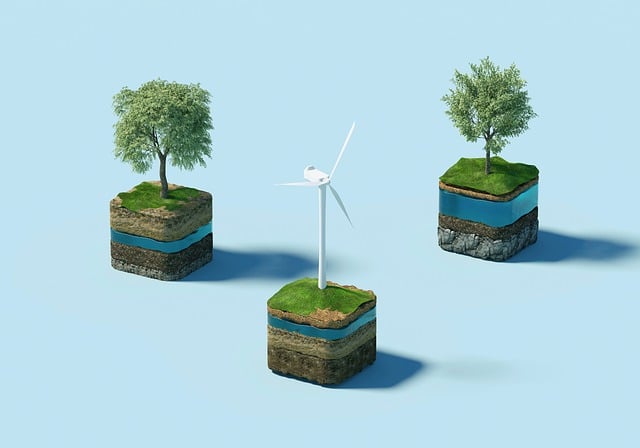
Waste Management in Off-Grid Living
Proper waste management is essential for maintaining a clean and healthy living environment in off-grid settings. Here are some key components of waste management in off-grid living:
Reducing Waste
The first step in waste management is reducing the amount of waste generated. This can be achieved by practicing conscious consumption, avoiding single-use items, and opting for durable and reusable products.
Recycling
Recycling involves the separation and processing of recyclable materials such as paper, plastic, glass, and metal. Off-grid communities can set up recycling systems to ensure that waste materials are properly sorted and recycled.
Composting
Composting is a natural process of decomposing organic waste, such as food scraps and yard trimmings, into nutrient-rich compost. Composting can be done in a designated compost pile or through the use of composting bins. The resulting compost can be used to enrich the soil in gardens and agriculture.
Communication and Connectivity in Off-Grid Living
In today’s interconnected world, communication and connectivity are essential even in off-grid environments. Here are some components of communication and connectivity in off-grid living:
Satellite Internet
Satellite internet provides internet connectivity in remote areas where traditional internet infrastructure is not available. It relies on satellite signals for communication and can be a lifeline for off-grid communities in terms of accessing information, education, and communication.
Wireless Technology
Wireless technology such as Wi-Fi and Bluetooth enables connectivity within an off-grid community. It allows for the sharing of information, data, and resources among individuals or devices without the need for physical connections.
Radio Communication
Radio communication is a reliable means of communication in off-grid environments, especially in areas with limited or no internet connectivity. Radios can be used for emergency communication, community announcements, and staying connected with the outside world.

Healthcare and Medical Needs in Off-Grid Living
Maintaining health and medical needs in off-grid living requires self-sufficiency and access to alternative healthcare methods. Here are some components of healthcare and medical needs in off-grid living:
Alternative Medicine
Off-grid communities often rely on alternative medicine practices such as herbal medicine, naturopathy, and traditional healing methods. These practices focus on natural remedies and holistic approaches to health and well-being.
First Aid and Emergency Preparedness
Having a well-equipped first aid kit and knowledge of basic first aid techniques is essential in off-grid living. Emergency preparedness includes having plans in place for medical emergencies, natural disasters, or other unforeseen events.
Self-Sufficiency in Healthcare
Living off-grid often means being self-reliant when it comes to healthcare. This includes learning basic medical skills, maintaining a healthy lifestyle, and having access to essential medical supplies and equipment.
Education and Skill Development in Off-Grid Living
In off-grid living, education and skill development take on a different approach compared to traditional schooling. Here are some components of education and skill development in off-grid living:
Homeschooling
Homeschooling allows children in off-grid communities to receive education in a flexible and individualized manner. It involves parents or community members taking on the role of educators and tailoring the curriculum to suit the needs and interests of the children.
Skill Sharing
Off-grid communities often promote skill sharing among community members. This involves individuals teaching and learning practical skills such as gardening, carpentry, cooking, or renewable energy systems, contributing to the overall self-sufficiency of the community.
Hands-on Learning
Hands-on learning is a key component of education in off-grid living. It involves engaging in practical activities and experiments to gain a deeper understanding of various subjects such as science, technology, engineering, and mathematics (STEM).
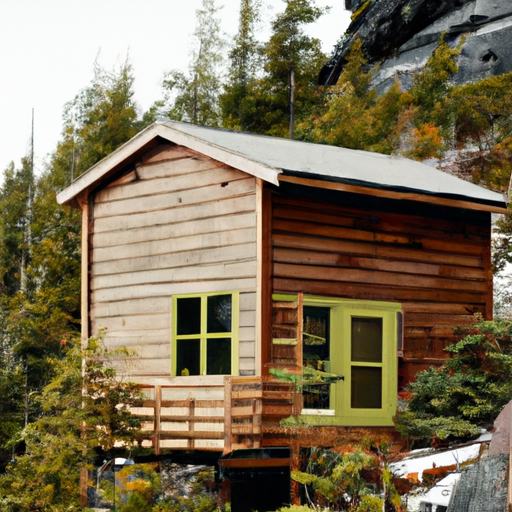
Conclusion
Embracing off-grid living involves understanding and integrating various components to achieve self-sustainability and pave the way for a sustainable future. From energy sources to water and sanitation, food production, building and shelter, waste management, communication and connectivity, healthcare, and education, each component plays a crucial role in creating a self-sufficient and environmentally friendly lifestyle. By adopting these essential components, individuals and communities can reduce their carbon footprint, decrease their dependence on external resources, and embrace a simplified lifestyle focused on basic needs and sustainability. Off-grid living is not without its challenges, but with the right knowledge, preparation, and mindset, it can be a rewarding and fulfilling way of living.
As an Amazon Associate I earn from qualifying purchases.
